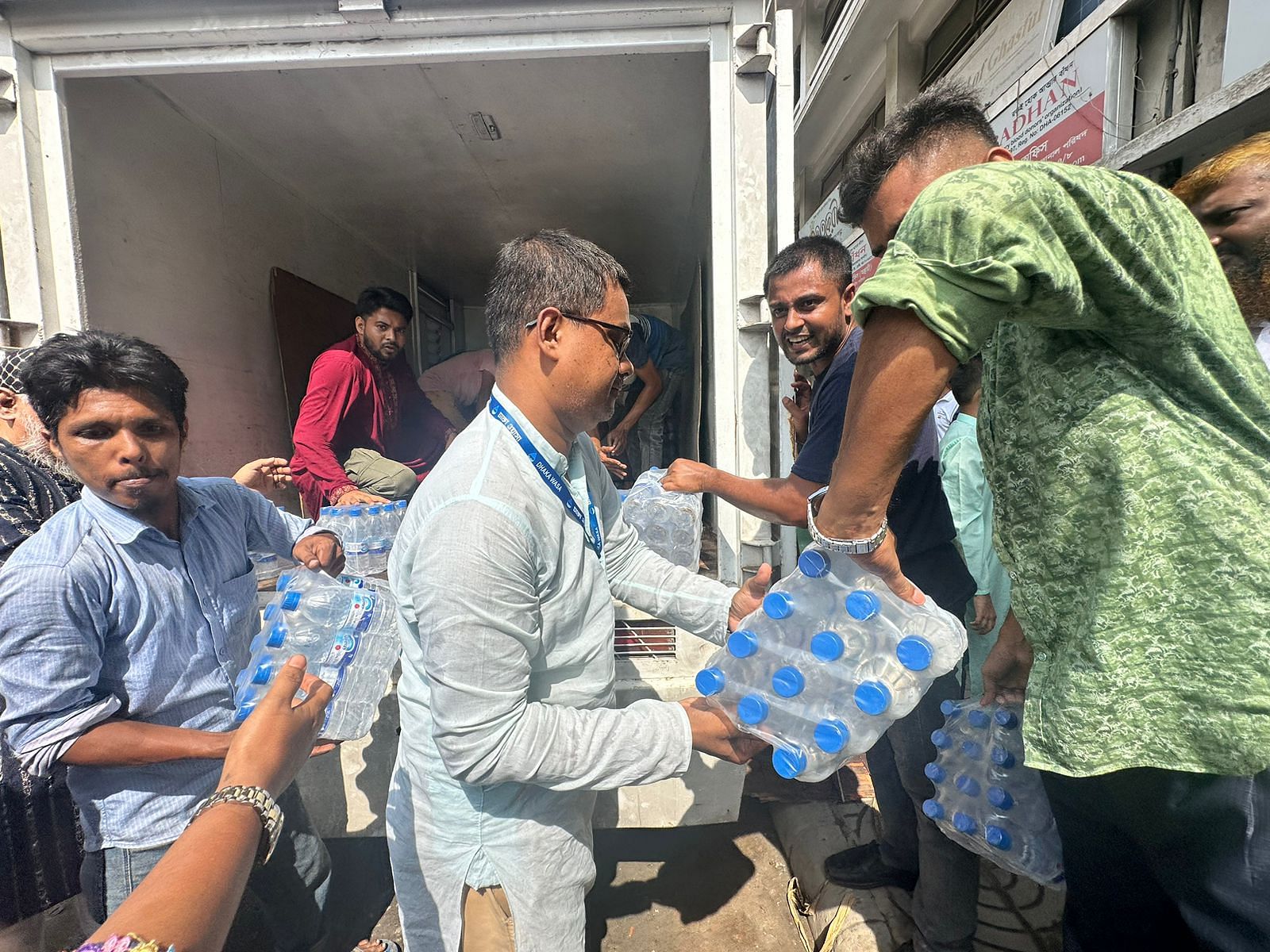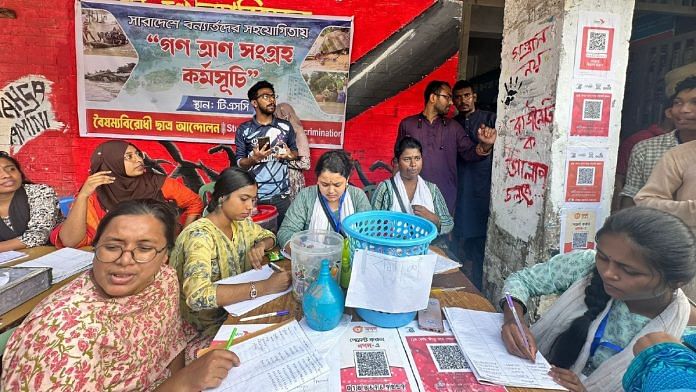Dhaka: While Bangladesh undergoes a political transition after a student movement ended the 15-year rule of former prime minister Sheikh Hasina, students have taken up a new task—coordinating flood relief efforts.
Floods, triggered by heavy rains, have killed at least 15 people in the past two weeks, while at least 4.8 million have been affected.
She is not alone. The entire student community, from across universities, colleges, and departments, has come together to deal with this crisis. They have made rosters and are collecting donations. Medical students have already left for flood-stricken regions to establish medical camps. The efforts are part of an initiative to support the interim government in managing the crisis, students told ThePrint.
They feel it’s their responsibility.
“We fought for our country’s freedom and ousted the dictator. Now this is ours to build. This is a time of crisis and we have mobilised all possible resources to make sure we contribute the most in this relief exercise for our people. We have been working day and night for this. This is the most important task at hand and students yet again are taking the lead,” Mishkat Imamul-Haq, a student at Dhaka University, said.
11 districts—Feni, Comilla, Noakhali, Lakshmipur, Brahmanbaria, Chittagong, Cox’s Bazar, Khagrachhari, Sylhet, Moulvibazar and Habiganj—are among the worst affected by flooding.
According to reports, as many as 887,629 families are still trapped in floodwaters. On Friday, in a statement, Md Kamrul Hasan, secretary of disaster management and relief ministry, said that so far 188,739 people had taken refuge in shelter centres and the flood-affected areas had received a total allocation of 3.52 crore Bangladeshi Takas, 20,150 tonnes of rice and 15,000 packets of dry food.
Kamrul also acknowledged that rescue operations in the flood-affected areas were being carried out by the army, the navy, the Coast Guard, Border Guard Bangladesh, fire services, local police, and students.
‘Separate teams, roster’
The students have divided themselves into three teams—rescue, distribution and management—explained Ashrifa Khatoon, a student pursuing a Masters in International Relations at Dhaka University.
“The management teams are ensuring that all the collections are done here in Dhaka. We have set up booths for donations across the city, the main one being here at the Dhaka University premises. Students are also going with donation boxes across the city, even in older parts to collect funds, and it is extremely heartening to see that people are donating generously,” she said.
She said that shopkeepers have donated rations from their shops, people have donated cash, those with minimum means have donated clothes and, in some cases, even their day’s earnings.
“We are just students but want to give our best to this cause in whatever we can do in our own capacity. We are sending trucks of food, some students also have experience in working in flood situations in rescue teams and they are being used on the ground,” she said.
Khatoon explained that more students, even from private universities, are constantly joining the cause and connecting on social media.
“We are posting everything on social media and people are joining us,” she said. “There are students from all streams—engineers, medical students—coming out to help,” she added.

Medical students at work
On Friday, medical students held a meeting at the Dhaka University campus to chart out a plan.
Speaking to ThePrint, Dr Sumaiya Shoily from Chittagong Medical College said that students from all medical colleges across different regions have come together to form medical teams that can go to the flood-affected areas, hold medical camps, and serve people.
“We know that, in these situations, a lot of water-borne diseases are common. So, we will be sending a lot of teams with supplies to the affected regions and ensure that medical camps are put for the people,” she said
“The country is going through a turmoil so this is the least we can do,” she added.
Shoily added that the funds for the supplies are being pooled by students and a lot of it is being collected via donations. She said they were also receiving help from the interim government led by Nobel laureate Muhammad Yunus.
Dr Mazhar-ul, a resident doctor in Dhaka, said that even doctors are making a roster to ensure maximum help reaches the ground.
“We have created a roster and we will continue to depute people in relief camps where medical camps are being put up. This is to ensure maximum coverage on the ground,” he said.
(Edited by Sanya Mathur)
Also Read: On Dhaka’s streets, palpable anger toward India for ‘sheltering’ Hasina, acting ‘superior’







Ms. Ananya Bharadwaj’s reporting on Bangladesh comes across as very shallow. It’s quite clear that she is not well acquainted with the history of Bengal 1857 onwards which eventually led to the creation of Bangladesh. Her understanding of Bengali society also leaves a lot to be desired. And the Hindu-Muslim issue in Bangladesh is something totally beyond her pale.
The Print has assigned the wrong person to report on Bangladesh